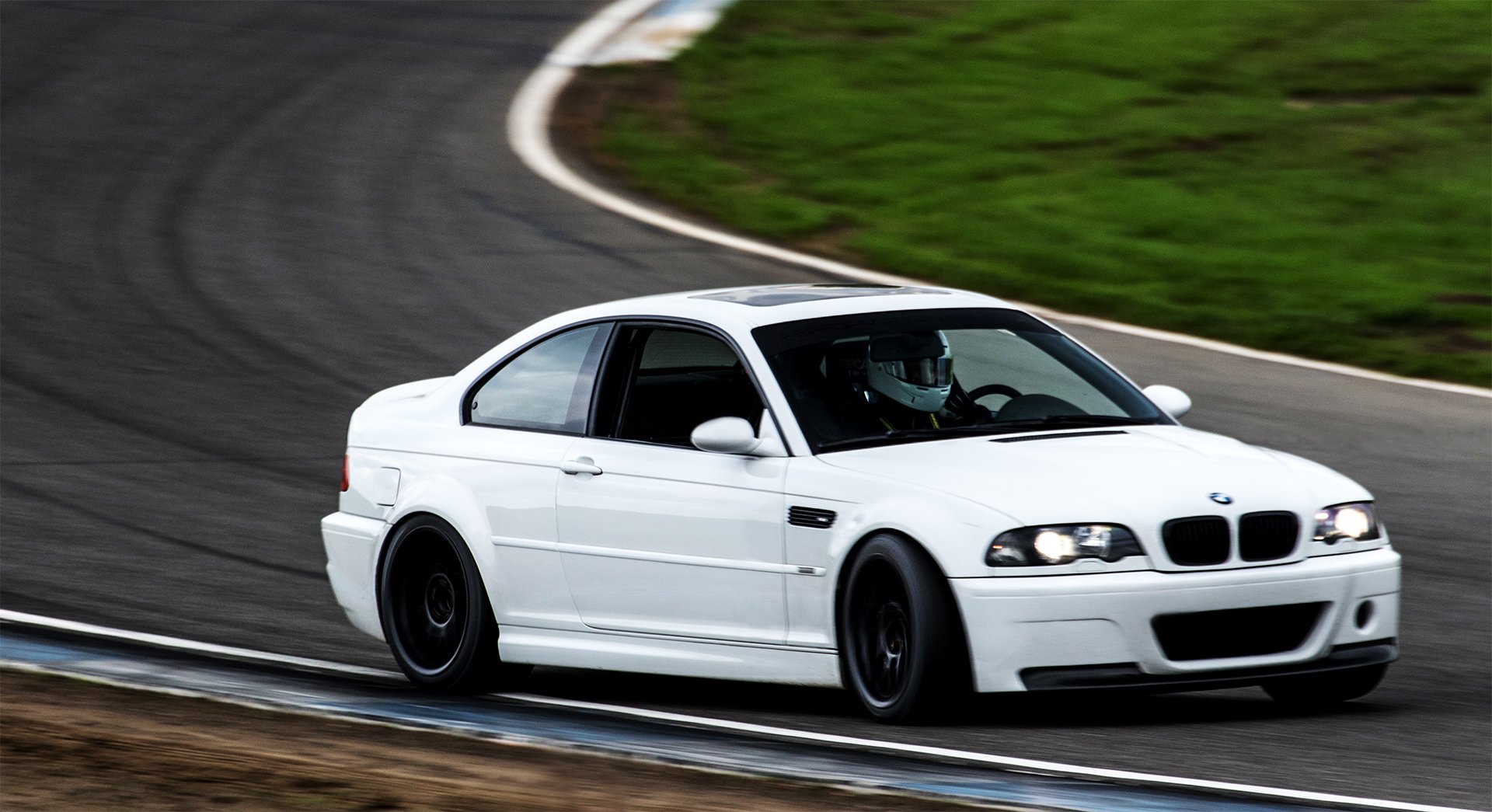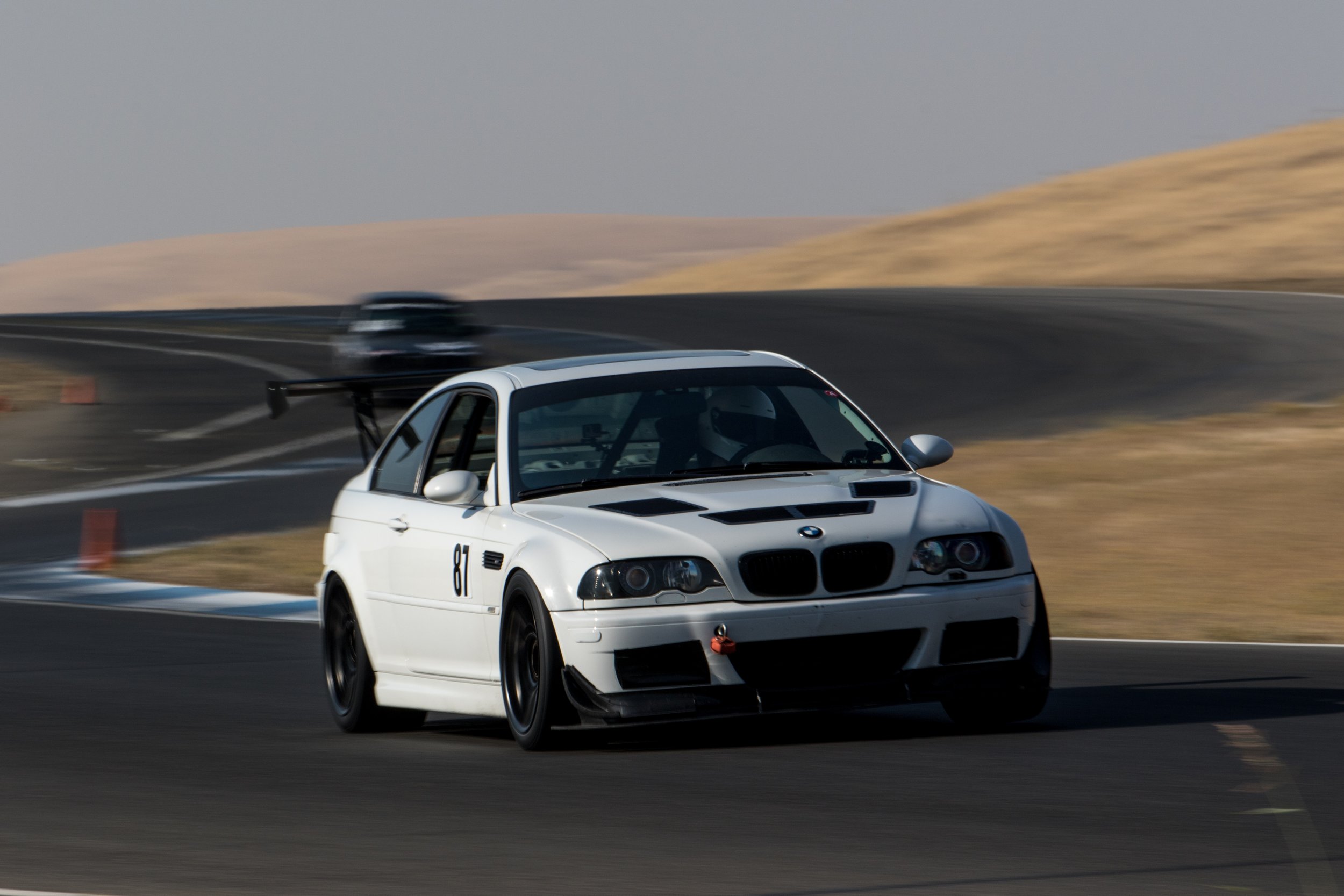Dan Avon's E46 M3: A Study in Taking Things Slowly
One doesn’t need to have a big V8 or a turbo to go quickly at most of Northern California’s medium-speed tracks. They don’t necessarily need a featherweight, either. The E46 M3 sits somewhere between the two. Weighing in at 3,200 pounds and making a healthy 300-odd horsepower with moderate torque, it straddles the fence between momentum car and muscle car. With the right touch and a few chassis mods to help bring out this middlewight’s best attributes, namely its handling, it remains a hard car to beat.
Dan Avon took a comprehensive approach to tuning his 2004 M3; engine power, grip, balance, and braking performance were all valued evenly throughout this build’s three or four stages. Most importantly, he’s learned how to gel with the car by fine-tuning its handling so that it complements his driving style.
Its first iteration as a mildly modified road car was fun, though he felt the plush nature of the M3 was limiting its on-track performance. That didn’t concern him much as he was still driving it to work, to the grocery store, and through the canyons. The motor made ~285whp with a set of Status Group Tuning headers and a Dinan muffler, and with a full interior, it weighed ~3,400 lbs with driver and a half-tank of gas. Despite those less than stellar figures, the broad powerband of the motor and the playfulness of the car were satisfying enough to overlook its shortcomings.
Except some. The factory suspension was not up to snuff, so he added TC Kline D/A coilovers, rear camber arms, and polyurethane trailing arm bushings. Even with these modifications, it was very much a street car. His growing fascination with developing the car and improving his lap times meant he’d stuff track wheels in the car before driving it to the track, but it was still doing double-duty.
He started stripping the car slowly and systematically to help give it a feeling of agility. Being a plush car, it wasn’t hard to remove a couple hundred from the total. It then became clear that the Brembo brake kit wasn’t really as inspiring as he thought they’d be, plus the consumable costs were high, so he eventually swapped those for a set of PFC binders.
With an AFe Stage II intake and a Epic Motorsports tune, he now had 300 horsepower at the rear wheels. Again, he made sure to address every area of performance through the various stages of modification, so even if the improvements seemed insignificant on paper, it felt more alert, competent, and encouraging. The M3 was always meant to be more than just the sum of its parts.
Weight reduction became more and more important to him as he learned to push harder, so after five years of worsening this car’s civility, Dan decided that the M3’s days as a street car were over. He chucked most of the carpet, door panels, and roof liner to get it down to a respectable 3,100 pounds with driver and a half-tank.
Increasing his cornering speeds and just generally working the car harder revealed some of the limitations of the factory differential. When he installed the renowned OS Giken 1.5-way differential with aluminum bushings, he could generate much more propulsion off the corner, even if the rear was moving around slightly. At the same time other areas of the rear suspension were addressed with various mono-ball bushings in place of the previous poly bushings.
Not that it was ever tailhappy. His setup was neutral to oversteery; an extremely satisfying and manageable balance that helped yield some great lap times. Still, he wanted to experiment with a little aerodynamic grip—even if that risked the near-ideal balance he’d achieved..
With a Bimmerworld rear wing and a homemade front splitter, the car had even more stick in the braking zones and the few high-speed corners at Thunderhill and Sonoma. The upside was that the lap times immediately fell by a couple seconds.
Unfortunately, that aero grip came at a price. The once playful car was suddenly arrested at the front end; a persistent mild understeer kept him from enjoying the car like he once did.
In an attempt to take some weight off the car, particularly off the front, and restore some of that neutral handling he once enjoyed, he added Supersprint V1 headers and Section 1 midpipe, a Bimmerworld cat back race exhaust, a Ground Control hollow front sway bar, a rear-mounted Antigravity battery, and Bimmerworld carbon headlight blanks. These measures saved nearly 200 pounds in total, but the push was still plaguing him. At least the car was significantly quicker.
Frustrated with the balance but happy to see this car evolve into a no-compromise track toy, he continued to stiffen and harshen. Why not? He’d already decided to start trailering this dedicated track car, so he had no reservations about adding a rear half cage from TC Design, Turner Motorsport solid aluminum engine and transmission mounts, a set of MCS three-ways, and a Racetech 4119 halo-style bucket.
Life has gotten in the way in the last year, but he’s still fascinated by the car—and hopes to return to regular lapping days in the near future. “I’ve always enjoyed tinkering and seeing what improved the car and what didn’t. I’ve used my AIM system to determine exactly where the tweaks paid off. I guess that’s what motivated me most of the way.”
He’s still frustrated by the current balance, so he’s pondered two possible paths to follow once he gets back into the swing of things. Either he removes the aero and tries to optimize the mechanical grip of a lightweight car, or he finds the biggest, meanest cattle plow of a splitter he can find to give the front some much-needed aero grip. Either way, he’ll be measuring incremental improvements and sticking to his basic philosophy of addressing every aspect of performance and taking baby steps. Seeing how quickly this middleweight, mid-powered M3 navigates Northern California’s best tracks, it’s certain this steady, methodical tuning approach works.





